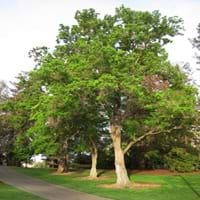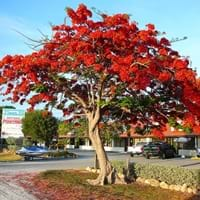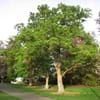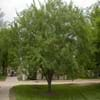Life Span
Perennial
Perennial
Type
Tree
Flowering Plants, Tree
Origin
Eastern Asia, China
Not Available
Types
Candleberry tree
Not Available
Habitat
Saline Soils, Upland, Upland soils
old gardens
USDA Hardiness Zone
8-10
10-11
AHS Heat Zone
10-8
Not Available
Sunset Zone
H2, 8, 9, 12, 13, 14, 15, 16, 18, 19, 20, 21
Not Available
Habit
Oval or Rounded
Clump-Forming
Minimum Height
Not Available
Minimum Width
Not Available
Flower Color
Yellow
Orange Red, Yellow
Flower Color Modifier
Bicolor
Multi-Color
Fruit Color
White, Ivory
Brown
Leaf Color in Spring
Green
Green
Leaf Color in Summer
Green
Green
Leaf Color in Fall
Yellow, Red, Orange
Green
Leaf Color in Winter
Not Available
Green
Leaf Shape
Heart-shaped
Oblong
Plant Season
Spring, Summer, Fall
Fall, Spring, Summer
Sunlight
Full Sun
Full Sun, Partial Sun
Growth Rate
Fast
Very Fast
Type of Soil
Clay, Loam, Sand
Clay, Loam, Sand
The pH of Soil
Acidic, Neutral, Alkaline
Acidic, Alkaline
Soil Drainage
Average
Well drained
Bloom Time
Spring
Early Summer, Summer
Tolerances
Cold climate, Drought, Pollution, Salt
Drought
Where to Plant?
Ground
Ground
How to Plant?
Grafting, Seedlings, Stem Planting, Transplanting
Seedlings
Plant Maintenance
Medium
Low
Watering Requirements
Average Water Needs, Medium, Requires watering in the growing season
occasional watering once established
In Summer
Lots of watering
Lots of watering
In Spring
Moderate
Moderate
In Winter
Average Water
Average Water
Soil pH
Acidic, Neutral, Alkaline
Neutral, Alkaline
Soil Type
Clay, Loam, Sand
Clay, Loam, Sand
Soil Drainage Capacity
Average
Well drained
Sun Exposure
Full Sun
Full Sun, Partial Sun
Pruning
Remove damaged leaves, Remove dead leaves, Remove dead or diseased plant parts, Remove deadheads
Requires little pruning
Fertilizers
fertilize in growing season, Less fertilizing, Nitrogen
Apply 15-5-15
Pests and Diseases
Insects, Red blotch
Pests and diseases free
Plant Tolerance
Cold climate, Drought, Salt
Drought
Flowers
Insignificant
Showy
Flower Petal Number
Single
Single
Foliage Texture
Medium
Medium
Foliage Sheen
Matte
Matte
Attracts
Not Available
Not Available
Allergy
Nausea, Toxic, Vomiting
Not Available
Aesthetic Uses
Landscape Designing
Showy Purposes, Used in parkland
Beauty Benefits
No Beauty Benefits
Not Available
Environmental Uses
Absorbs greenhouse gases, Absorbs huge amounts of CO2, Air purification, Amazing growth rate, Erosion control, Food for insects, Forms dense stands, Nesting sites for birds, No fertilizer, pesticides, or herbicides needed, Prevent Soil Erosion, Shadow Tree, Shelter for wildlife, Soil protection, soil stabilisation, Used to establish native woodland, Very little waste, Wildlife, Windbreak
Air purification, Shadow Tree
Medicinal Uses
Boils
antihelmintic, anti-inflammatory, Arthritis, constipation, hemiplagia, Inflammation
Part of Plant Used
Fruits, Leaves, Seeds
Whole plant
Other Uses
Employed in herbal medicine, Showy Purposes, Used as firewood, Used for its medicinal properties
Grown for shade, Used as Ornamental plant
Used As Indoor Plant
No
No
Used As Outdoor Plant
Yes
Yes
Garden Design
Feature Plant, Shade Trees, Street Trees
Edible, Herb / Vegetable, Mixed Border
Botanical Name
TRIADICA sebifera
Delonix regia
Common Name
Chinese Tallow
Gulmohar, Royal Poinciana
In Hindi
चीनी तेल
गुलमोहर
In German
chinesisch Talg
Flammenbaum
In French
chinesisch Talg
Delonix regia
In Spanish
suif chinois
malinche
In Greek
κινέζικο ζωικό λίπος
Delonix regia
In Portuguese
sebo chinesa
flamboiã
In Polish
chiński łój
wianowłostka królewska
In Latin
Chinese adipe
CHORIZIA
Phylum
Embryophyta
Magnoliophyta
Class
Magnoliopsida
Magnoliopsida
Order
Malpighiales
Fabales
Family
Euphorbiaceae
Brassicaceae
Clade
Angiosperms, Eudicots, Rosids
Angiosperms, Eudicots, Rosids
Tribe
Hippomaneae
Not Available
Subfamily
Euphorbioideae
Caesalpinioideae
Number of Species
Not Available
Not Available
Properties of Chinese Tallow and Royal Poinciana
Wondering what are the properties of Chinese Tallow and Royal Poinciana? We provide you with everything About Chinese Tallow and Royal Poinciana. Chinese Tallow doesn't have thorns and Royal Poinciana doesn't have thorns. Also Chinese Tallow does not have fragrant flowers. Chinese Tallow has allergic reactions like Nausea, Toxic and Vomiting and Royal Poinciana has allergic reactions like Nausea, Toxic and Vomiting. Compare all the properties and characteristics of these two plants. Find out which of these plant can be used as indoor plant. If you are interested to decorate your house and garden, find out aesthetic uses, compare them and select the plant which will beautify your surrounding. Along with beautification, try comparing medicinal and edible uses of Chinese Tallow and Royal Poinciana and you can choose the plant having best and most benefits.
Season and Care of Chinese Tallow and Royal Poinciana
Season and care of Chinese Tallow and Royal Poinciana is important to know. While considering everything about Chinese Tallow and Royal Poinciana Care, growing season is an essential factor. Chinese Tallow season is Spring, Summer and Fall and Royal Poinciana season is Spring, Summer and Fall. The type of soil for Chinese Tallow is Clay, Loam, Sand and for Royal Poinciana is Clay, Loam, Sand while the PH of soil for Chinese Tallow is Acidic, Neutral, Alkaline and for Royal Poinciana is Acidic, Alkaline.
Chinese Tallow and Royal Poinciana Physical Information
Chinese Tallow and Royal Poinciana physical information is very important for comparison. Chinese Tallow height is Not Available and width Not Available whereas Royal Poinciana height is 1,100.00 cm and width 1,300.00 cm. The color specification of Chinese Tallow and Royal Poinciana are as follows:
Chinese Tallow flower color: Yellow
Chinese Tallow leaf color: Green
Royal Poinciana flower color: Orange Red and Yellow
- Royal Poinciana leaf color: Green
Care of Chinese Tallow and Royal Poinciana
Care of Chinese Tallow and Royal Poinciana include pruning, fertilizers, watering etc. Chinese Tallow pruning is done Remove damaged leaves, Remove dead leaves, Remove dead or diseased plant parts and Remove deadheads and Royal Poinciana pruning is done Requires little pruning. In summer Chinese Tallow needs Lots of watering and in winter, it needs Average Water. Whereas, in summer Royal Poinciana needs Lots of watering and in winter, it needs Average Water.





